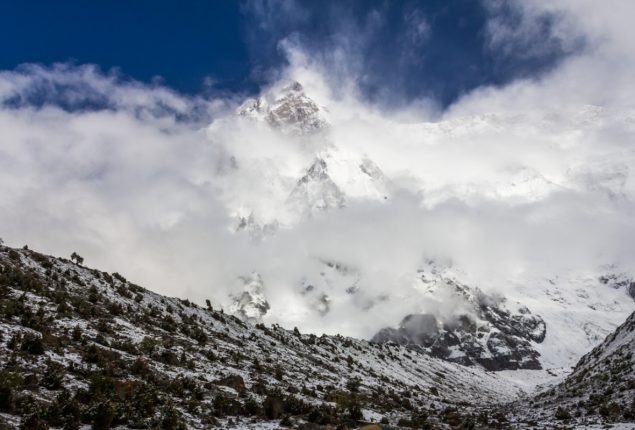Three Nepali mountaineer sisters summit Everest, made their way to Guinness World Record
Nepali mountaineer sisters summit Everest, made their way to Guinness World Record....

Nanga Parbat mountain
The rescue effort to bring back the Pakistani mountaineer Asif Bhatti, who became stranded on the peak owing to snow blindness, was put on hold on Wednesday at Nanga Parbat because of a rockfall.
Bhatti, who is also a professor at a university, was able to leave camp four on Tuesday after becoming stranded there on Monday.
Israfyl, an Azerbaijani climber, travels with the mountaineer as they make their way down the mountain.
Shah Daulat and Mohammad Yonus, two climbers, are among the volunteers on the rescue mission to save Bhatti.
“The two volunteer climbers who went for upper slopes of NP [Nanga Parbat] last night couldn’t go any further from C1 due to rockfall which started on the mountain last night,” the Karakoram Club tweeted from their official account on Wednesday.
Advertisement#NangaParbat
The two volunteer climbers who went for upper slopes of NP last night couldn’t go any further from C1 due to rockfall which started on the mountain last night. The weather seems to be getting worse and Heli rescue is the only hope unless a miracle happens and… pic.twitter.com/HxTEjTlILO— The Karakoram Club (@KarakoramClub) July 5, 2023
“The weather seems to be getting worse and Heli [helicopter] rescue is the only hope unless a miracle happens and climbers are able to come down on their own. Prayers for everyone on the mountain and the basecamp,” it added.
According to Asif Khoja, Bhatti’s social media coordinator and point of contact, “Dr. Bhatti’s health is deteriorating and helicopter sling operation seems to be the only solution.”
“Immediate actions and decisions are required to save the life of Professor Bhatti,” he added.
Due to its high number of fatalities, the 8,126-meter Nanga Parbat, the ninth-highest peak in the world, is regarded as deadly. The mountain has a challenging ascent in addition to the danger of avalanches, storms, and unstable glaciers.
The mountain was known as “the Killer Mountain” since 31 people perished trying to reach it before its first ascent in 1953.
Another name for the peak is “the western anchor of the Himalayas.” It ranks as the third-most dangerous mountain peak in the world with a death percentage of 22.3%.
Catch all the Sports News, Breaking News Event and Latest News Updates on The BOL News
Download The BOL News App to get the Daily News Update & Follow us on Google News.